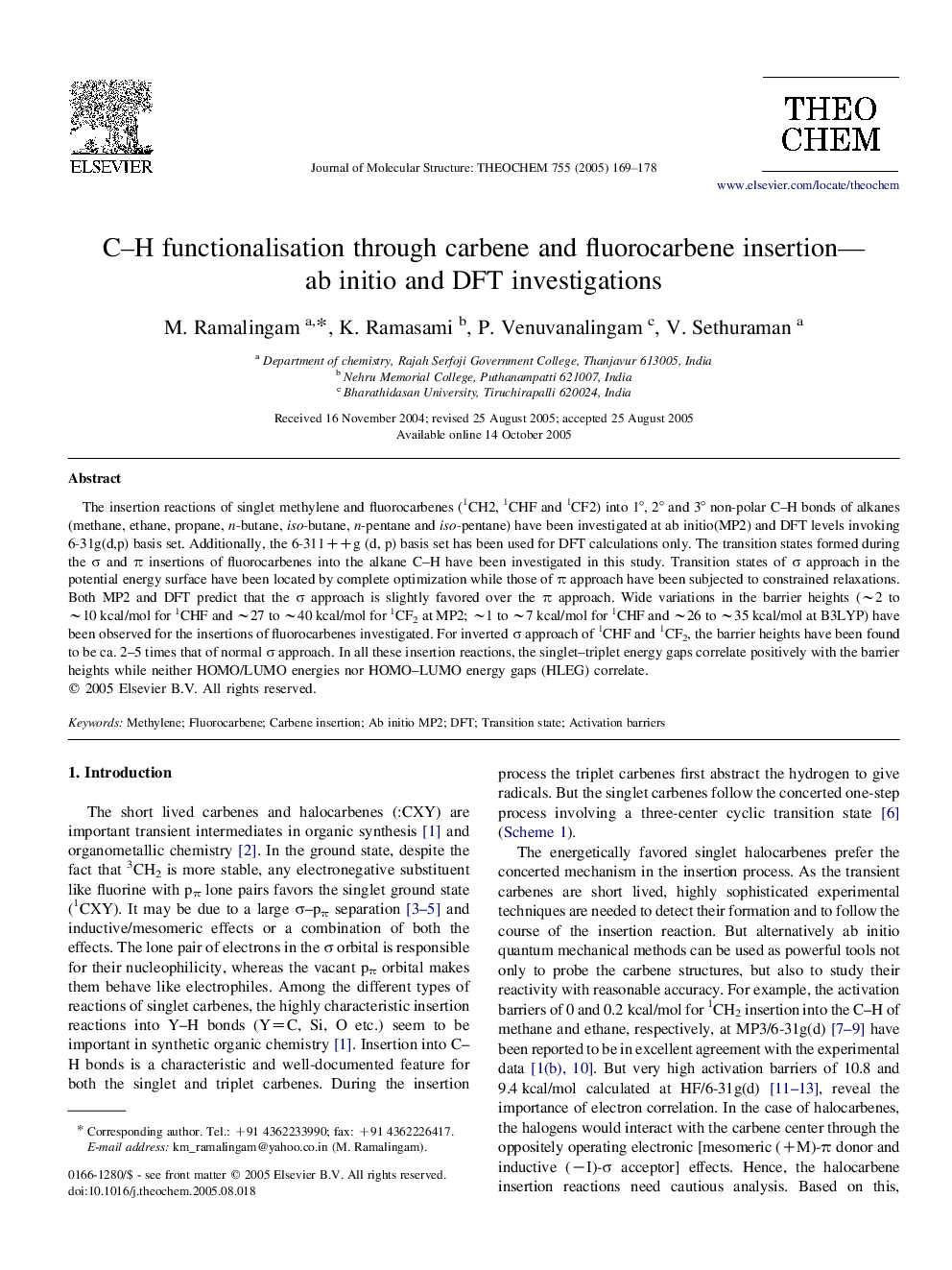| Article ID | Journal | Published Year | Pages | File Type |
|---|---|---|---|---|
| 9590534 | Journal of Molecular Structure: THEOCHEM | 2005 | 10 Pages |
Abstract
The insertion reactions of singlet methylene and fluorocarbenes (1CH2, 1CHF and 1CF2) into 1°, 2° and 3° non-polar C-H bonds of alkanes (methane, ethane, propane, n-butane, iso-butane, n-pentane and iso-pentane) have been investigated at ab initio(MP2) and DFT levels invoking 6-31g(d,p) basis set. Additionally, the 6-311++g (d, p) basis set has been used for DFT calculations only. The transition states formed during the Ï and Ï insertions of fluorocarbenes into the alkane C-H have been investigated in this study. Transition states of Ï approach in the potential energy surface have been located by complete optimization while those of Ï approach have been subjected to constrained relaxations. Both MP2 and DFT predict that the Ï approach is slightly favored over the Ï approach. Wide variations in the barrier heights (â¼2 to â¼10 kcal/mol for 1CHF and â¼27 to â¼40 kcal/mol for 1CF2 at MP2; â¼1 to â¼7 kcal/mol for 1CHF and â¼26 to â¼35 kcal/mol at B3LYP) have been observed for the insertions of fluorocarbenes investigated. For inverted Ï approach of 1CHF and 1CF2, the barrier heights have been found to be ca. 2-5 times that of normal Ï approach. In all these insertion reactions, the singlet-triplet energy gaps correlate positively with the barrier heights while neither HOMO/LUMO energies nor HOMO-LUMO energy gaps (HLEG) correlate.
Related Topics
Physical Sciences and Engineering
Chemistry
Physical and Theoretical Chemistry
Authors
M. Ramalingam, K. Ramasami, P. Venuvanalingam, V. Sethuraman,
